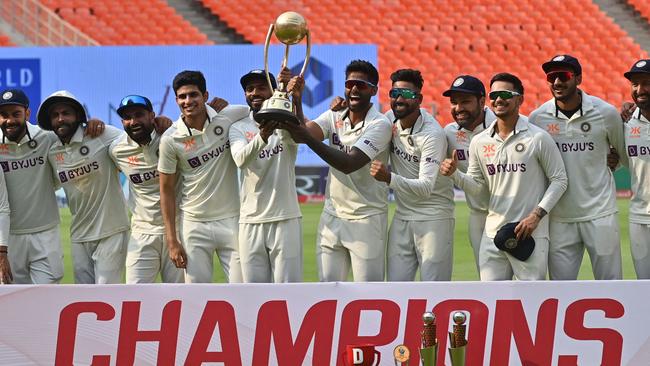Money is power, and India has both in plentiful supply
India is the world’s richest cricket country but it is pushing for an even larger share of the pie, with demands it get even more of ICC’s distribution to members than it does now.

A rising tide lifts all boats, but when you own the water rights, control the flood gates and captain the biggest ocean liner, you are going to sit a hell of a lot higher in the water than anyone else.
Not content with securing a $9bn television deal for the IPL alone, the Indian board is pushing for a bigger slice of the revenue from ICC distributions, with estimates it could increase its share of revenue from 22 per cent to 37 per cent.
The move would see India’s share rise from the $550m it received in the last eight-year period to $1.3bn or more.
Under the last deal the ECB was given $190m while Australia and the other full members received $170m.
The matter was raised at last month’s ICC meeting in a Revenue Model Distribution Paper. BCCI secretary Jay Shah is also the head of the ICC financial committee.
India argues that it bankrolls cricket and there’s no denying that reality with estimates that it is now responsible for nine of every 10 dollars – up from eight out of 10 – generated by the game.
The push comes after the ICC sold the 2024-27 Indian broadcast rights for $4.5bn – vastly more than will be generated by all the other territories combined.
Soon projected to have the highest population in the world, India’s rising middle class has emboldened broadcasters to purchase any cricket rights they can get their hands on. The ICC’s schedule of annual World Cups is premium product.
Even if India snatches a larger share of the pie, Australia and the other countries will get a significant increase in distributions from the ICC because of Indian broadcasters’ insatiable appetite for the game.
India argued for an increased share back in 2017 and met little resistance as all participants stood to gain – as they do this time.
Australia and the other countries will see a massive windfall even if India grabs a bigger share, but the matter is sure to be contested at the next ICC meeting in July.
Australia could, under the new models, still expect to see its ICC revenues at least double.
The amounts generated by Indian cricket give it unprecedented power in cricket.
Australian chair Mike Baird argued recently that India needs Australia as much as it needs India; England would be of similar mind. But even without international cricket the BCCI generates revenues other countries can only dream of.
The IPL’s financial gravity has seen boards concede an unofficial two-month window in the cricket calendar and even frame it as a de facto bonus for players who cannot earn anywhere near that much playing for their countries.
When Cricket Australia boasted a healthy increase in the potential earnings of women players in its latest MOU, it added that some now had “the capacity to break the $1m mark” with further earnings in the Women’s Premier League (India) and The Hundred (UK).
The IPL almost tripled the value of its IPL broadcast deal, selling the rights for 2023-27 for close to $9bn. At the time, Shah boasted it made the competition “the second-most valued sports league in the world per match value”.
The new deal valued each game at $15m per match.
Australian cricket had to deal with the reality that its most valuable young player, Cameron Green, is being paid $3.15m to play with the Mumbai Indians when it can only offer him around a third of that to play Tests, ODIs and T20s for his country.
In the past, players of the calibre of David Warner, Pat Cummins and Glenn Maxwell have all had big pay days at the IPL but been able to put country first, but the balance of power shifts further toward the franchise model every year.
Shah’s boast about the value of the IPL on a per-match basis stands up, with figures showing it sits behind the NFL but well ahead of the EPL and other elite sports.
While players are regularly earning multiples of what they could playing for their country, analysis suggests the IPL is paying well under what other sports distribute to their players, with the Indian board and the billionaire franchise owners pocketing an excessive share of the revenue.
According to research done by London Telegraph journalist Tim Wigmore and sports economist Stefan Szymanski, the IPL is underpaying its stars.
Most major sports distribute half or more of their revenue to the player, with the EPL, which distributes 71 per cent, at the top of a table that ranges down to the NFL, which sets aside 48 per cent. The IPL by comparison gives its players a measly 18 per cent of revenue.



India is the world’s richest cricket country but it is pushing for an even larger share of the pie, with demands it get even more of ICC’s distribution to members than it does now.